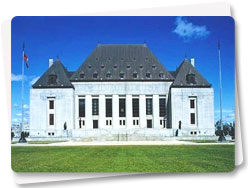Supreme Court Museum

Supreme Court Museum
Tilak Marg, New Delhi-110001. Ph.: 23388922-24Timing: 10:00 am to 5:00 pm (Tuesday-Sunday),
Closed: Monday and other holidays of Supreme Court Registry
Entry : Free
Photography: Strictly Prohibited
Divided into two sections, first section deals with the evolutions and development of Judiciary in India while the second deals with the Federal Court and the Supreme Court. Also on display in first section are, history of Indian legal system from British period, the Harappan seals and the head of a priest, Ashokan edict and Nalanda Copper plate of 9th Century A.D. In the second gallery antique furnitures, souvenirs, ceremonial costumes & wigs and files relating to landmark judgements delivered by Supreme Court are on display. The records of famous cases such as Mahatma Gandhi murder case and India Gandhi assassination case etc. are also on display. Entry free & photography prohibited.
The Supreme Court of India is the highest judicial forum and final court of appeal under the Constitution of India, the highest constitutional court, with the power of constitutional review.
It comprises the Chief Justice of India and 30 other judges. It has original, appellate and advisory jurisdictions.
As the final court of appeal of the country, it takes up appeals primarily against verdicts of the High Courts of various States of the Union and other courts and tribunals.
The Supreme Court has extensive original jurisdiction for the protection of fundamental rights of citizens. It also acts as the court to settle disputes between various governments in the country. As an advisory court, it hears matters which may specifically be referred to it under the Constitution by the President of India. It also may take cognisance of matters on its own (or 'suo moto'), without anyone drawing its attention. It was first set up in Calcutta for administration of justice. The law declared by the Supreme Court becomes binding on all courts within India.








